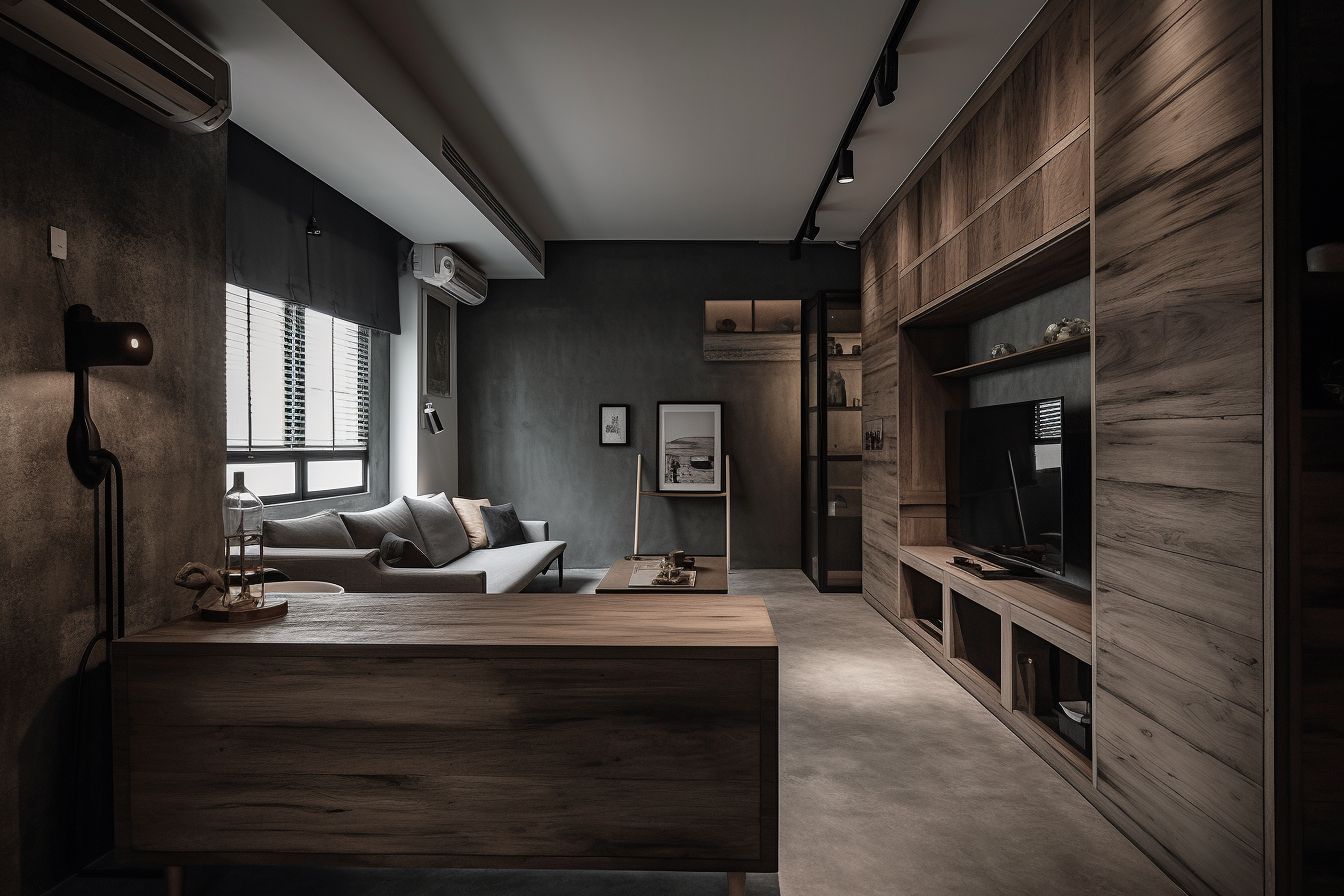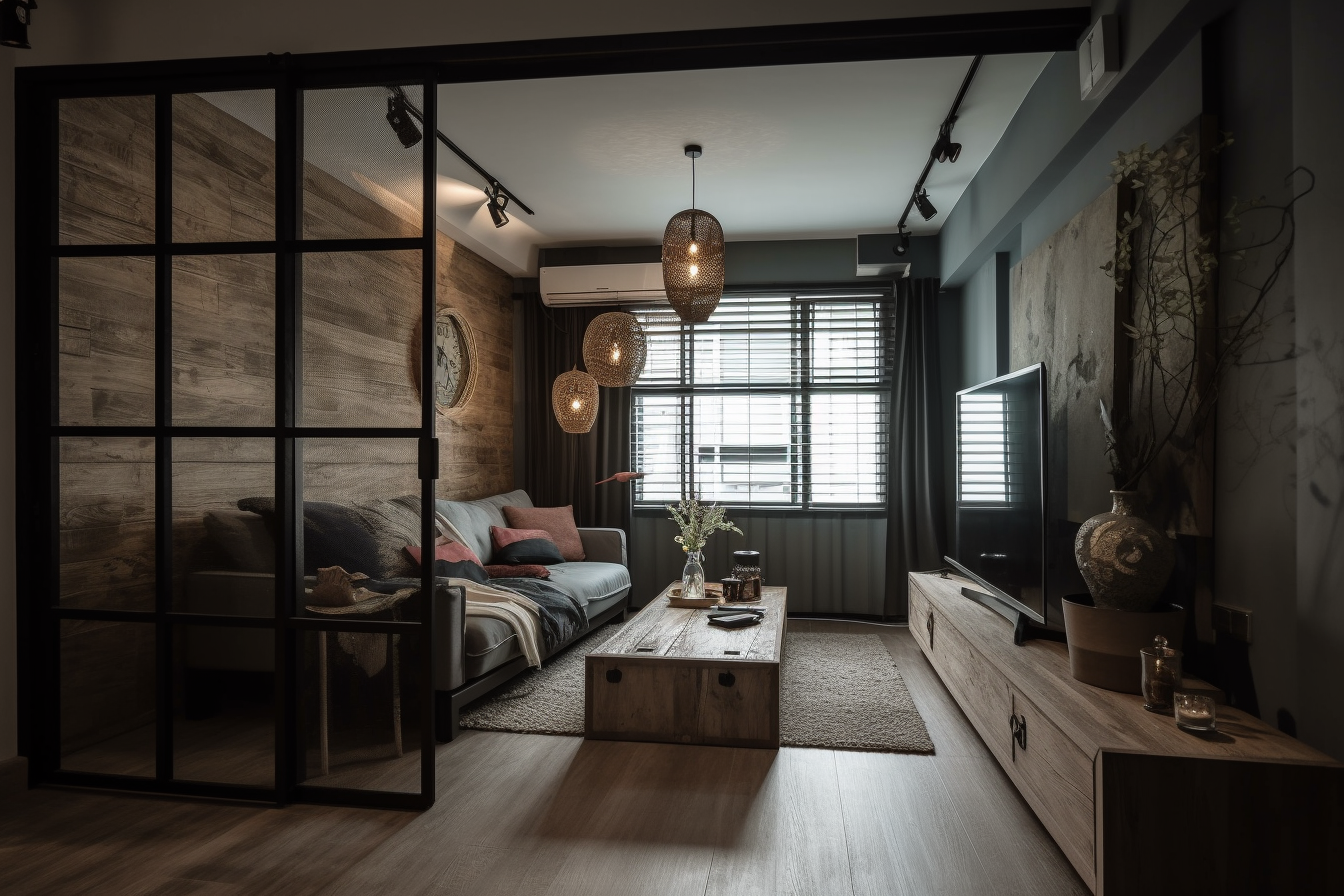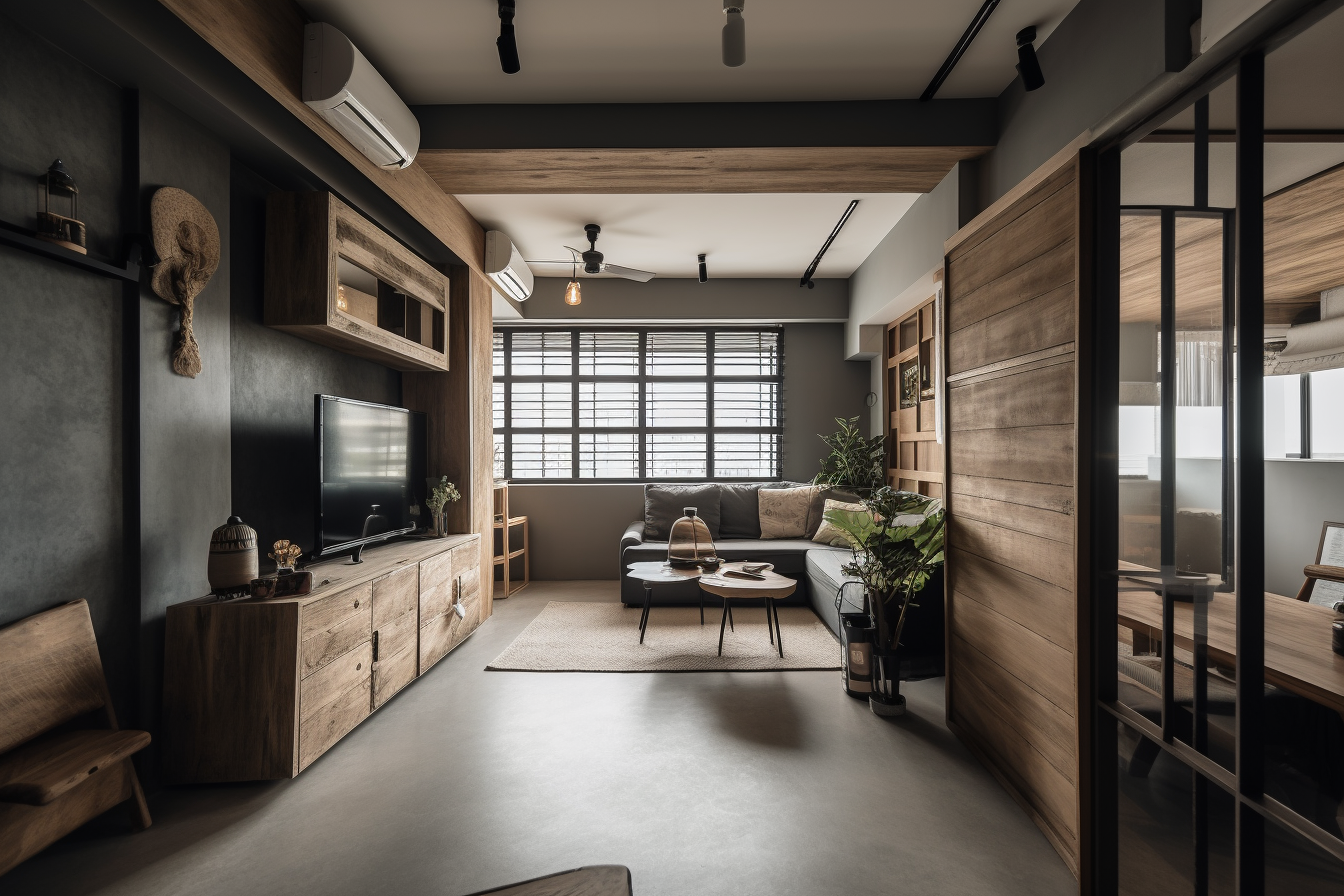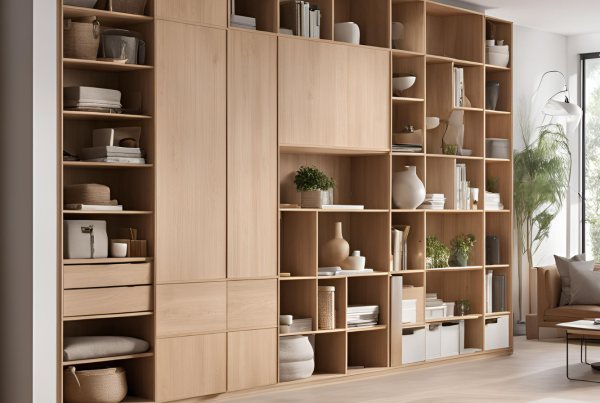Wabi-sabi is a Japanese aesthetic philosophy about finding beauty in imperfections, simplicity, and the natural world. When you bring this philosophy into your home’s interior design, it creates a peaceful and calming atmosphere. It’s all about appreciating the little things and feeling content with what you have. So, embrace the imperfect, go for a minimalistic vibe, and use natural materials to create a space that feels harmonious and serene. It’s about finding joy in the simple pleasures of life.
In Singapore, where there is a strong emphasis on modernity and efficiency, incorporating wabi-sabi elements can add a sense of calm and tranquility to living spaces. The use of natural materials like wood and bamboo can bring warmth to homes, while the appreciation for aged and weathered items can infuse character and charm.
Moreover, wabi-sabi’s emphasis on minimalism and decluttering aligns with the limited space available in many Singaporean homes. By adopting wabi-sabi design principles, residents can create an uncluttered and welcoming space that promotes a sense of mindfulness and simplicity.
The wabi-sabi philosophy also complements the traditional elements of Japanese design that have influenced Singaporean architecture and interior decor. By embracing wabi-sabi, homeowners can integrate both modern and traditional aspects, resulting in a unique and balanced living environment.
Here’s an in-depth guide to incorporating wabi-sabi into your home’s interior design:
Embrace Simplicity
Wabi-sabi is all about simplicity and minimalism. Start by decluttering your space and keeping only the essential items. Opt for clean lines and avoid overly ornate or extravagant designs.
Natural Materials
Choose natural materials for your furniture and decor. Wood, stone, bamboo, and clay are excellent choices. These materials have inherent imperfections and textures that add to the wabi-sabi aesthetic.
Weathered and Aged Elements
Wabi-sabi celebrates the beauty of age and weathering. Look for vintage or antique furniture and decor pieces with patina and signs of wear. These imperfections tell a story and add character to your space.
Earthy Color Palette
Stick to a subdued and earthy color palette that reflects nature. Shades of brown, beige, gray, and muted greens work well. These colors create a calming and grounding atmosphere.
Handmade and Artisanal Items
Embrace craftsmanship and choose handmade or artisanal pieces for your home. Handcrafted items have a unique charm and individuality that aligns with wabi-sabi principles.
Textures and Textiles
Add texture to your space through natural fibers like linen, cotton, and wool. Incorporate soft, comfortable textiles in your furniture and use traditional Japanese elements like tatami mats or shoji screens.
Imperfect Beauty
Wabi-sabi celebrates imperfections and irregularities. Instead of seeking flawlessness, find beauty in the irregular patterns, asymmetry, and small quirks of your decor.
Nature-Inspired Decor
Bring the outdoors inside by incorporating elements inspired by nature. Place indoor plants, dried flowers, or branches in vases to connect your space with the natural world.
Soft Lighting
Use soft and diffused lighting to create a warm and cozy ambiance. Avoid harsh, bright lights that can disrupt the serenity of your space.
Mindful Placement
Consider the arrangement of your furniture and decor thoughtfully. Aim for a balanced and harmonious layout that encourages flow and ease of movement.
Negative Space
Embrace negative space in your design, allowing areas of emptiness to bring attention to the objects and elements in your space. This concept enhances the overall sense of tranquility.
Personal Touch
Infuse your space with elements that hold personal meaning to you. Family heirlooms, sentimental items, or souvenirs from travels add a layer of personal history to your wabi-sabi home.
Adaptability and Flexibility
Wabi-sabi design emphasizes an acceptance of change and impermanence. Allow your space to evolve naturally over time, and be open to adjusting the design as you find new pieces or as your tastes change.
Keep in mind that wabi-sabi is more about embracing imperfections and finding beauty in simplicity than following strict rules. The style of interior design is highly suitable for Singapore, as it offers a way to create a peaceful and harmonious space that embraces simplicity, natural beauty, and the appreciation of imperfection. Let your home be a reflection of who you are and what you value, allowing it to bring you joy and tranquility. If you’re interested in incorporating Wabi Sabi design into your home, reach out to KWYM Interior Designs today and start creating a space that truly resonates with you.










